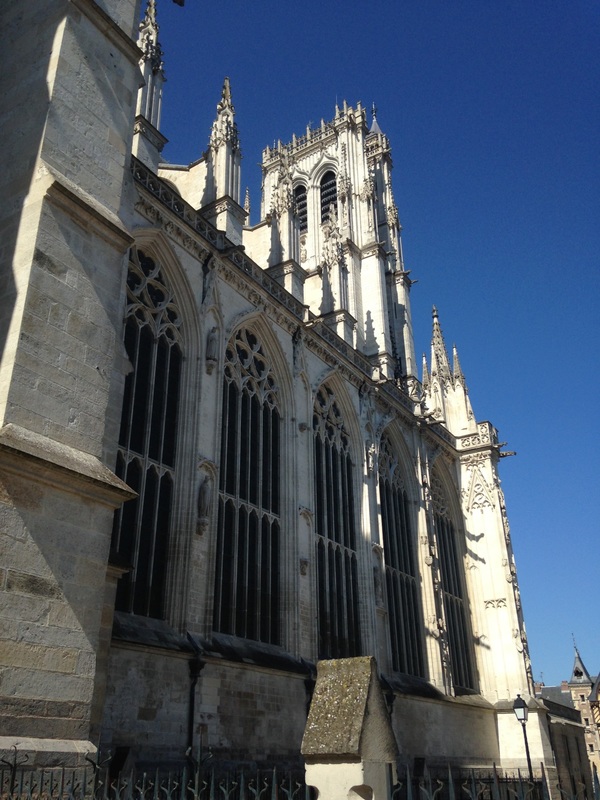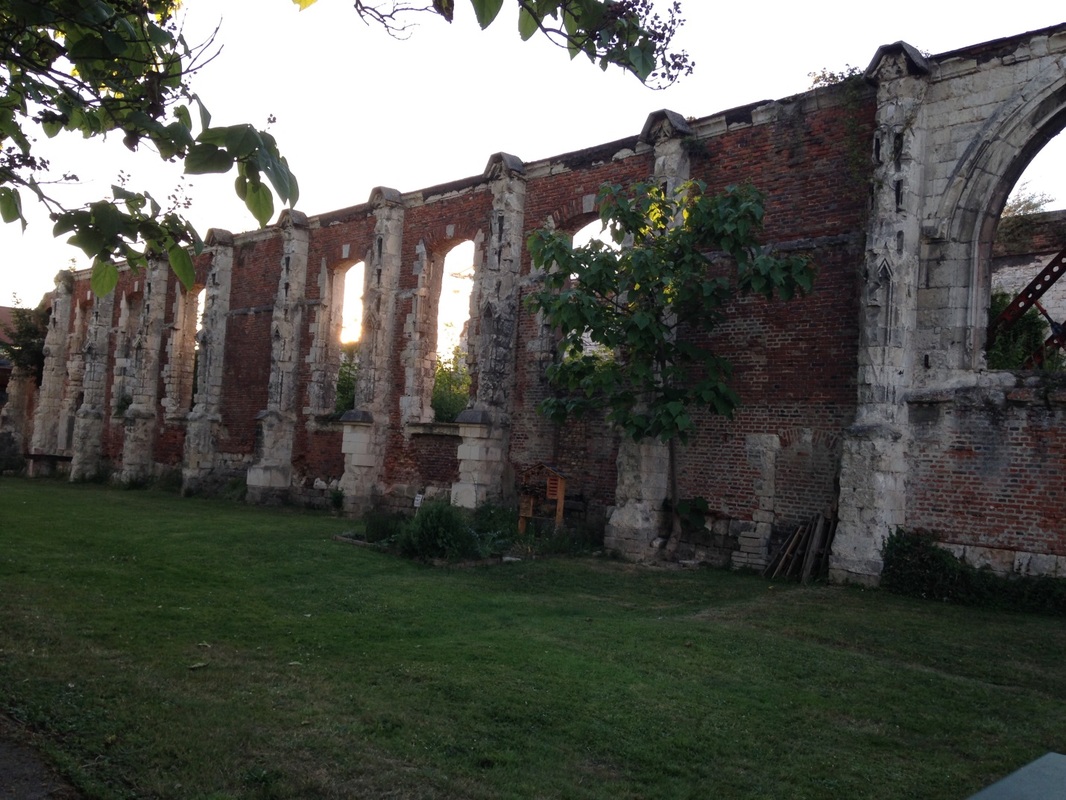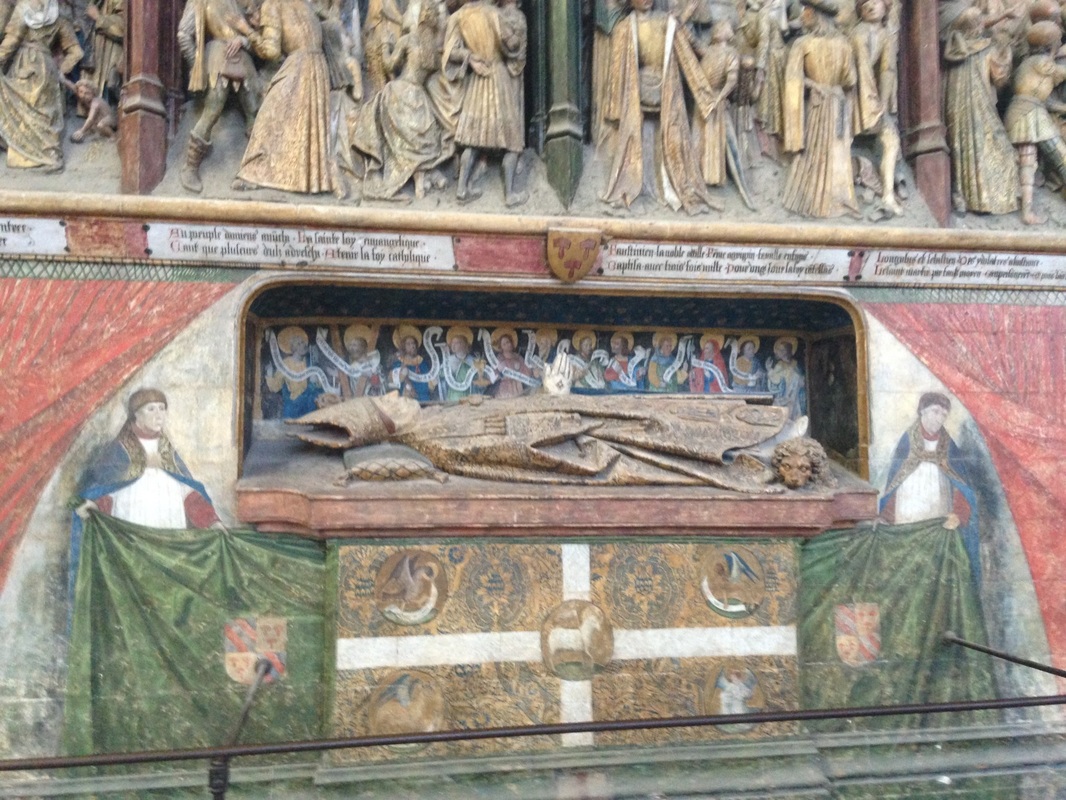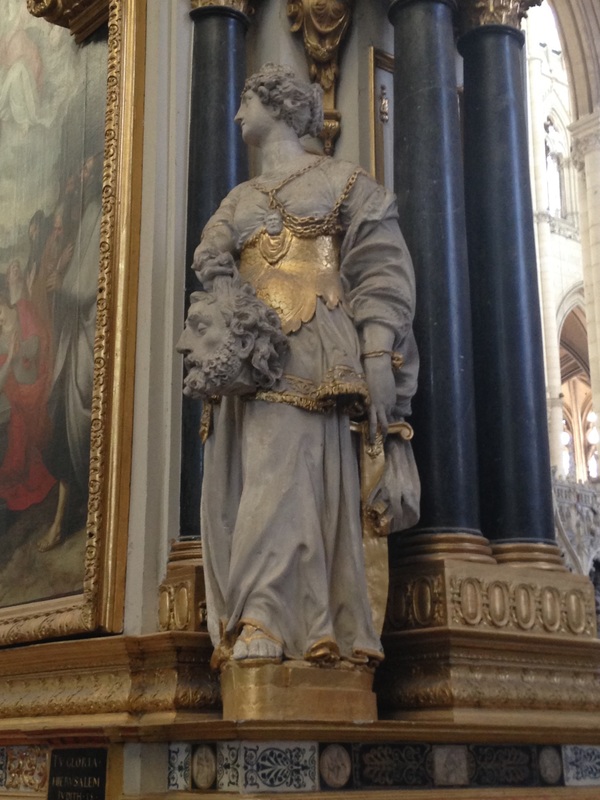Amiens, a middle-sized city that has spilled out onto the surrounding landscape in the last half-century, is the capital of Picardy. Jules Verne lived here. The two world wars of the 20th century brought Amiens its share of Jules-Verne-like adventures, with futuristic airships dropping bombs and modernistic armies creating havoc and extensive redevelopment opportunities. Some 1500 years earlier Attila the Hun ravaged the area, and a millennium or so after that the Spanish occupied it during the Wars of Religion. In short, Amiens has a long history.
As it happens, we didn't wind up seeing much of modern Amiens. Our GPS veered us off the highway, through a neighborhood where the old city walls must have stood, and into the center of ancient Amiens, a rocky bluff above the Somme River with the Cathedral of Notre Dame on the summit.
https://en.wikipedia.org/wiki/Amiens_Cathedral
Our hotel was almost adjacent to the cathedral. Alex asked at the hotel desk what else there was to do in Amiens and we were advised not to miss the nightly fete in the cathedral square, which included a light show. We assumed “fete” meant jongleurs, rat catchers and Morris dancers prancing about to sackbut and flugelhorn, while buxom soutanes and flirty chasubles kept the famished mob happy with stoneware tankards of malted beverage. We resolved not to miss the medieval cosplay by any means. Having sampled some quite decent beer at the café across the street, we headed out to walk around the cathedral and down into the formerly medieval town. Circling the cathedral on foot, one soon gets an idea how this structure just goes on and on.
The waitress asked us where we were from, and seemed slightly taken aback that we were Americans. Alex’s French is natural enough to get him pegged vaguely as a regional citoyen of some sort but beyond that, apparently not many Americans slog through Amiens. “How did you like Paris?” the waitress said.
“We didn’t go to Paris,” Alex said.
“You came to Amiens instead of Paris?” she said. She seemed truly floored.
This was my opportunity to unleash the only complete French sentence I know: “Je ne regrette rien.” Otherwise it would be une faute objective.
It was now time to head off through the dusk to the cathedral fete. Imagine our surprise to find no jongleurs, no soutanes or even demi-soutanes. Instead, a projector array had been set up around the square to recreate the original polychrome in which the medieval cathedral had been painted when it was new. A long melodious narration accompanied the play of lights, with atmospheric Debussy and plainsong accompaniment. The show was divided into chapters, between which the projectors recreated cloudy moonlight blowing across the façade of the cathedral, representing the passage of time. The colors faded. They were lost. Then they were back, garish and somehow deeply moving, the veritable colors of the past, the face of the church as the 13th century knew it. Only 30 or 40 people at most had come out to see the cathedral fete. This seemed a shame—the effect was utterly strange. The music was trance-like, the narration liquid and at least to me unintelligible, and the flow of light and shade magical, cloud and color on the stony heaven and the carved arrays of the holy, the cloud of witnesses as it was imagined in sandstone in Picardy before Constantinople fell. A stranger thing than this would be strange indeed.
The next morning the cathedral opened with the sun and we were able to go inside.
Golden shrines don’t seem to counteract the weird humility all bones have, and if that was not really John the Baptist it was surely somebody, somebody whose destiny was more than a trifle odd either way.
But the day was young and the weather was perfect and it was time to be off to Reims, as will be described in my next post in this series.
























 RSS Feed
RSS Feed